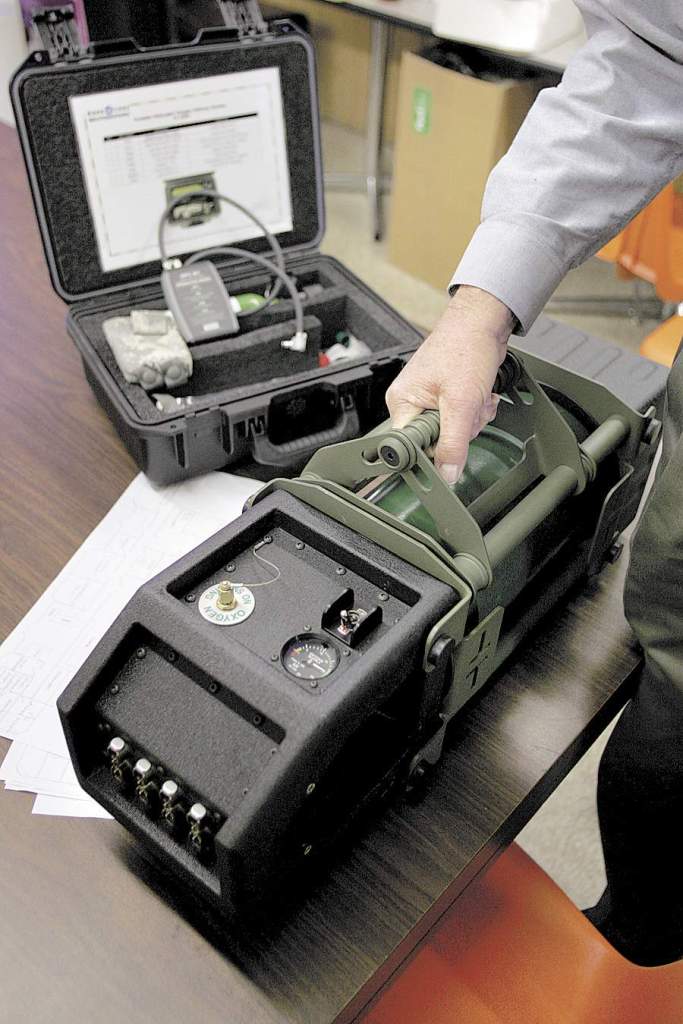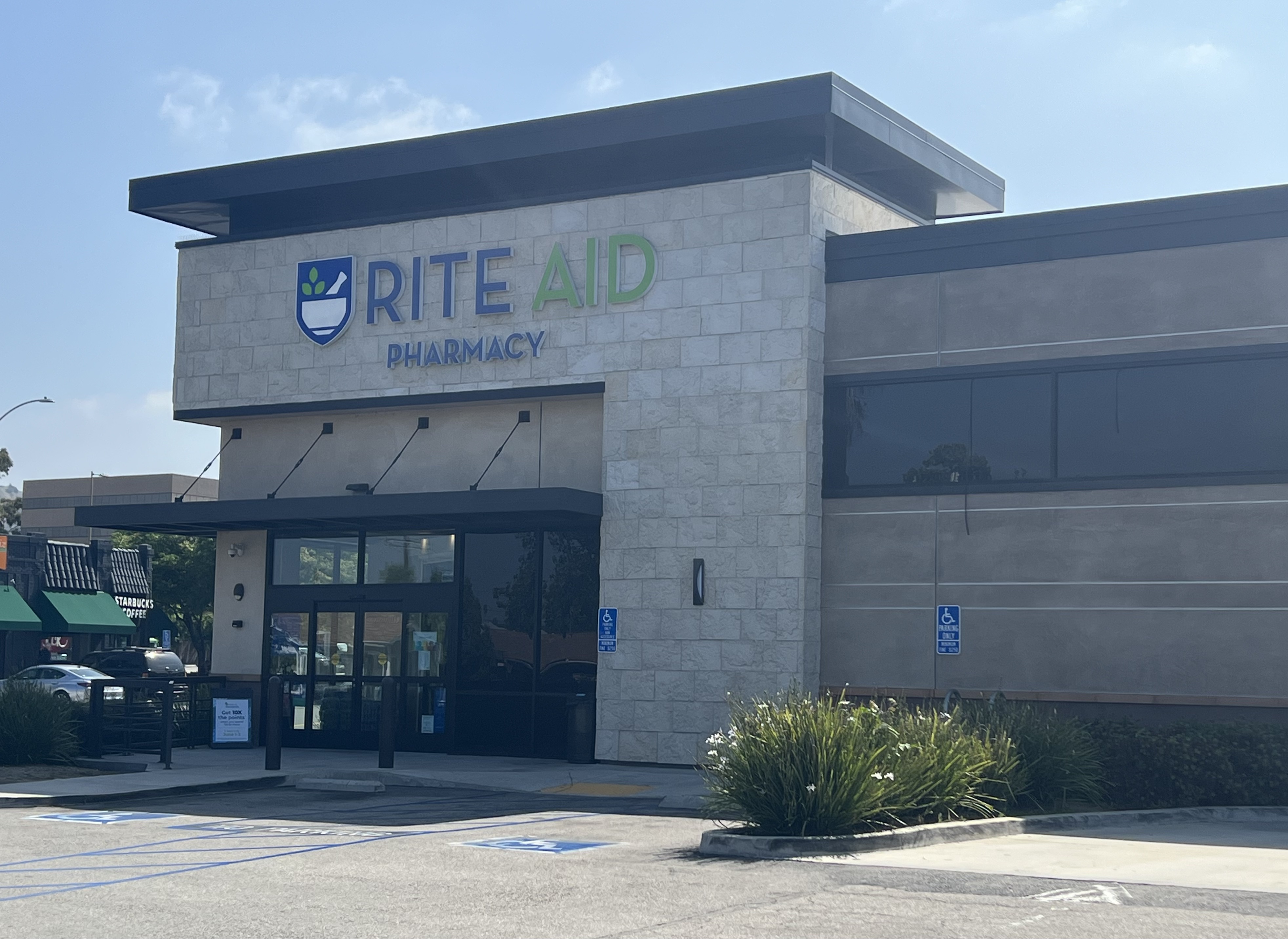Helping pilots breathe
Published 5:00 am Sunday, September 19, 2010

- Jamieson grabs onto one of Mountain High's latest products, a portable oxygen console, which works with the Portable Helicopter Oxygen Delivery System, top. Funding to further develop and produce the console cleared a U.S. Senate committee Thursday, but still must be approved by Congress.
REDMOND — The e-mail sent by a U.S. Army helicopter pilot contained a simple message, recalled Mountain High Equipment and Supply CEO Robert Jamieson, but it showed how much crews value the company’s oxygen-supply equipment.
Pilots in Afghanistan won’t fly without it, said the e-mail that arrived earlier this year.
“Here we are, a small company in Central Oregon,” Jamieson said. “The team takes a lot of pride in the fact that they are helping our warriors in Iraq and Afghanistan stay safe.”
It’s not just in Afghanistan. Mountain High’s aviation oxygen systems have become key components in other projects around the world.
The company, located across from Redmond Airport, has built custom-made oxygen systems for the pilot and co-pilot of the Solar Impulse, the first solar-powered aircraft being built in Switzerland to fly day and night and travel around the world.
Mountain High also has contributed its oxygen systems to The Perlan Project, an effort to fly a glider up to 90,000 feet. It’s also not the only Bend company involved. The plane is being built by Windward Performance, located at Bend Municipal Airport.
While the economic crash severely damaged the region’s aviation business hub, Mountain High has continued operations without layoffs or cutbacks, Jamieson said.
The company’s general sales dropped about 25 percent, he said, but the military work has helped keep the company and its 14 employees operating.
Mountain High is moving, although not far. It will be essentially crossing a small road and parking lot to take over the former Southeast Salmon Avenue home of kit-plane maker Lancair, which relocated to 250 S.E. Timber Ave., a few blocks away.
The move will more than double the company’s current 3,700 square feet, now filled from floor to ceiling in some areas with racks of parts bins and other supplies.
And it could be soon expanding its work for the military. A bill approved by the U.S. Senate Appropriations Committee on Thursday contained $2.5 million to help Mountain High develop and produce its portable helicopter oxygen systems to serve multiple soldiers.
Oxygen
Most folks who don’t fly planes probably take oxygen for granted. It’s in the air we breathe on the ground, and it’s supplied in the commercial aircraft that cruise at 35,000 feet.
But the lack of it above certain altitudes can quickly lead to disaster.
The Federal Aviation Administration generally requires pilots to use oxygen when flying unpressurized aircraft above 12,000 feet, and the agency has reported that at night above 5,000 feet, depth and color perception can be affected.
In 1999, lack of oxygen following a loss of cabin pressure, led to the crash of a Learjet and the deaths of pro golfer Payne Stewart, three other passengers and two crew members, according to the National Transportation Safety Board. The last radio transmission from the jet came eight minutes after takeoff.
“At 25,000 feet, with a loss of oxygen, you probably have two to four minutes before the lights go out,” Jamieson said. “At 60,000 feet, 30 seconds.”
Mountain High Equipment and Supply’s founding stemmed from a need for oxygen.
Company founder Patrick McLaughlin, with an educational background in pre-med and electrical engineering, decided to create his own portable oxygen system when he could not find a good system on the market.
When other pilots saw what he created, they wanted to buy one.
“What was a nuisance turned into a business,” he said.
McLaughlin, who is also director of engineering, started the company in Salt Lake City in 1985. He moved it to Central Oregon in 2000 after traveling here annually to participate as a vendor at gatherings at Lancair.
The products
What makes Mountain High’s oxygen systems stand out is the patented technology that controls the oxygen flow.
Instead of streaming oxygen continuously, Mountain High’s controller automatically adjusts to a pilot’s breathing rhythms, respiration rate and other factors and supplies only the amount necessary, depending on the altitude.
“It analyzes your breathing characteristics and gives you the exact amount of oxygen you need,” said Jamieson, who compares it to watering flowers with a garden hose.
Without a spray nozzle, water simply flows from the hose continuously. But a spray nozzle controls the flow.
“(You can) give each flower exactly the amount of water it needs,” he said.
Controlling the flow also makes the oxygen supply last longer, anywhere from four to six times longer, Jamieson said. So a smaller canister with flow control will last as long as a larger tank using a constant flow.
Mountain High sells oxygen systems strictly for the aviation market. The company also provides systems that can be built into airplanes, but 75 percent of its sales come from portable systems, Jamieson said.
The military showed an interest in Mountain High’s products over the years, McLaughlin said.
Representatives from the Norwegian and U.S. militaries told him the products were impressive, although they would not say exactly what they were using them for. They would, however, offer suggestions for improvements.
About three years ago, the company started an active roll as a military supplier.
Army helicopter pilots had difficulty completing missions in the mountainous regions of Afghanistan, where they routinely fly at altitudes between 10,000 and 18,000 feet. They were suffering from lack of oxygen, or hypoxia, which can lead to loss of skill and impaired judgment.
Mountain High became a subcontractor to Aqua Lung International, a California company that traces its roots back to Jacques Cousteau, with the Redmond company’s oxygen pulse controller becoming the centerpiece of the Portable Helicopter Oxygen Delivery System, or in military jargon, PHODS.
The Army began equipping helicopter crews with the devices last year, with between 2,000 and 3,000 in operation currently, according to Army and Senate documents.
Several official Army publications have reviewed the portable systems and given them positive reviews.
Soldiers wear the Portable Helicopter Oxygen Delivery Systems, which weigh 6 pounds, the Army write-ups point out. Some helicopters have oxygen systems built in, but they weigh more than 100 pounds. If a system breaks down, it takes the helicopter out of service.
Mountain High continues ongoing research to improve the product, McLaughlin said, with its latest product. The Portable Helicopter Oxygen Delivery Systems Console can resupply the individual units, extending the time they can be used in the field. It also will allow up to eight soldiers to connect to it.
The company has built a prototype, and if the funding approved by the Senate committee Thursday makes it through Congress, it will help Mountain High continue the console’s development and possibly lead to new jobs.
“All of the products are designed and built right here in Central Oregon,” Jamieson said.






